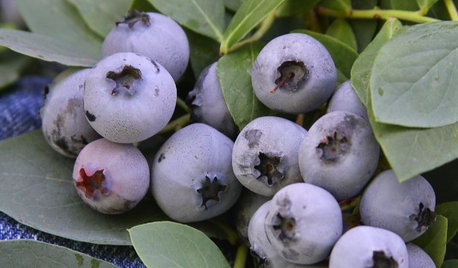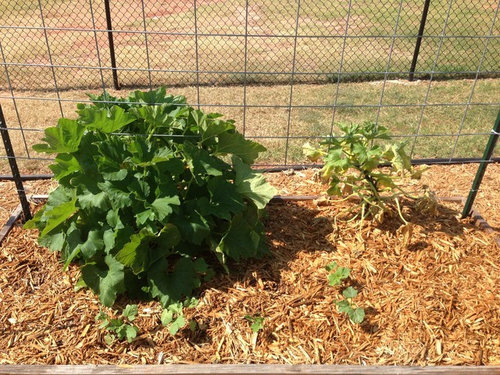Squash Disease?
dulahey
10 years ago
Related Stories

FARM YOUR YARDHouzz Call: Home Farmers, Show Us Your Edible Gardens
We want to see where your tomatoes, summer squashes and beautiful berries are growing this summer
Full Story
EDIBLE GARDENSSummer Crops: How to Grow Pumpkins
Start in spring to grow your own fall decorations and have plenty left for pies
Full Story
DECLUTTERINGSmall Steps for Keeping Your Housekeeping Resolutions
Take a different approach this year, making simple, positive changes that add up before you know it
Full Story
EDIBLE GARDENS8 Surefire Vegetables and Herbs for Beginning Gardeners
Learn the edible plants that are popular and easy to grow in a backyard or container garden
Full Story
GARDENING GUIDESEssential Watering Tips for Your Edible Garden
To give your edible plants just what they need, check out these guidelines for how, when and how much to water
Full Story
GARDENING GUIDES10 Easy Edibles for First-Time Gardeners
Focus on these beginner-friendly vegetables, herbs, beans and salad greens to start a home farm with little fuss
Full Story
GARDENING GUIDES15 Favorites for Your Summer Edible Garden
Get your summer garden off to a good start with these popular fruits and vegetables
Full Story
EDIBLE GARDENSHow to Grow Your Own Sweet Summer Crops
This guide will help any gardener get started on growing the freshest warm-season veggies and berries for summer
Full Story
EARTH DAY5 Ideas for a More Earth-Friendly Garden
Consider increasing the size of garden beds, filtering rainwater and using plants to reduce energy use
Full Story
KITCHEN DESIGNPro Chefs Dish on Kitchens: Paul Kahan Shows His Urban Sanctuary
Peek inside Kahan's newly redone home kitchen and learn what he considers most important for a cooking space
Full StoryMore Discussions








dulaheyOriginal Author
Okiedawn OK Zone 7
Related Professionals
Brooklyn Center Landscape Architects & Landscape Designers · Bloomington Landscape Contractors · Brooklyn Park Landscape Contractors · Fair Lawn Landscape Contractors · Methuen Landscape Contractors · Middletown Landscape Contractors · Ringwood Landscape Contractors · Siloam Springs Landscape Contractors · Southbury Landscape Contractors · New Carrollton Landscape Contractors · Coronado Decks, Patios & Outdoor Enclosures · Lafayette Decks, Patios & Outdoor Enclosures · Lakewood Decks, Patios & Outdoor Enclosures · Truckee Decks, Patios & Outdoor Enclosures · Santa Monica Decks, Patios & Outdoor EnclosuresdulaheyOriginal Author
dulaheyOriginal Author
dulaheyOriginal Author
Okiedawn OK Zone 7
slowpoke_gardener
dulaheyOriginal Author
Okiedawn OK Zone 7
Okiedawn OK Zone 7